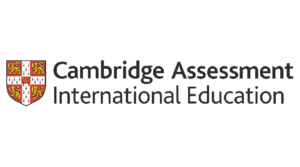
British education Vs American education system
It is always a parent’s desire to be able to give their children the best education they can so as to give then a competitive advantage in the real world. Every country has its own education system that sets to equip students with knowledge and skills to better them. In Kenya we have the old 8-4-4 system that is slowly transitioning to the CBC system.
As our own system is trying to advance itself, the most coveted education systems in the world is that of Britain and America which is way advanced and recognized across the globe. Most students who aspire to attend universities in the UK and US sit for these exams as their assessment is recognized worldwide so are their support centers and curriculum.
In this article, we will try to answer the most asked questions for anyone who wants to transition to any of these education systems. We will compare the British Education system against that of America to try and see which one is greater in terms of skills and knowledge it provides.
British Curriculum
The British system has levels, which are referred to as Key stages, that has set milestones a student needs to pass. The British system prides itself in its structure and depth of knowledge as it guides students from age three (3) to age sixteen (16) which are the most important growth years in a student’s life. The milestones set at each key stage enables a child develop a sense of an all-inclusive education which supports those students with different teaching needs and pushes the bright students to achieve more.
The British education system is divided into Primary level, Secondary level and the higher education level. The Primary level has the Foundation level for students aged three to five, also known as the playgroup. This level guides a child’s personal, social and emotional development making a child aware about the environment they are in. Still under the primary level we have key stage one from ages 5-7 and key stage two from age 7-11. Here, the students are introduced to basic numeric and literacy from Science, Math, Languages, Geography/History, Art, Literature and Health.
Secondary level has Key stage three and four from age 11-16. At this point the students are preparing for the main exams; the GCSE/IGCSE which is equivalent of KCSE in Kenya, which shows a student’s capability to further their studies. The Secondary level has a combination of 5-10 subjects that students pick from. These include Math, English, Physics, Chemistry, Biology, Foreign languages, Business and IT.
The Further education A level gives students’ different options after secondary education. This includes joining the workspace, going for vocational training or going to universities to further their studies. Those who take up further studies spend 2 years studying in in-depth the subjects they wish to. Here the students pick between 2-5 subjects.
They are two International bodies that offers British National Exam, that is Cambridge Assessment International Education (CAIE) and Pearson Edexcel, all this examination are recognized by KNEC in Kenya.We have many exam centers that supports private candidates.
The IGCSE which stands for Cambridge International General Certificate of Secondary Education provides an assessment approach that promotes and supports a student to build different vocational skills and encourages critical thinking in students and creative problem-solving. It allows diverse forms in which students can be assessed which include written assessment, oral, coursework and practical assessment. These exams are done in May/June and in October /November.
The American education system also has a basic structure that it follows which provides a curriculum that is diverse and flexible in terms of subjects, assessments and learning approaches. It follows the K-12 system which runs from Kindergarten to grade 12.
Pre-Kindergarten which is also known as Per-School is the first stage of education which introduces toddlers to all sorts formal and informal education before the actual school begins. The enrollment age starts from age 3 and the activities include arts and crafts, music, educational games, motor activities and listening skills.
Elementary education comes after Pre-K. This is primary education which makes up the majority of a students’ educational journey. It begins with kindergarten from age 5 or 6 then shift to grade 5 which is middle school where students make a transition from primary to secondary education. The curriculum covers the fundamental concepts in Arithmetic and Algebra, English language, Sciences, Music, Art, Languages and Physical education.
Secondary education is the phase that comes after primary from age 11 to 16. It is divided into junior high school from grade 6 to grade 8 and high school from grade 9 to grade 12. The subjects taught during junior high school include English, Math, Science, History and Physical Education. Students can also take advance subjects and foreign languages and can choose among the following subjects; Advanced Mathematic. Advanced Science, Geometry, Algebra, Pre-Algebra, Spanish, Latin, Chinese and French. After a successful completion of junior high school curriculum and assessments, students are awarded a Middle School Completion Diploma.
In High school, students take a few mandatory subjects like English, Math and Sciences together with other additional subjects such as Arts, Theatre, Geography, History, US History, Physical Education, Advanced Science, Advanced Math and languages. Students are also exposed to Health sciences which consists of Anatomy, Nutrition, First Aid, Drug awareness, Sex Education and Birth control. Graduating from High school will have the students awarded a High school Diploma which they can use to apply to higher institutions of learning.
Universities, colleges and vocational trainings is where most student go to after high school. Entry to universities is monitored and regulated by the College Board which prepares, guides and assesses students before they enter universities or colleges. The assessment is the Scholastic Assessment Test (SATs) and is applicable in both local and international students who want to gain entry in universities that follows the American education system. The main levels of higher education are the Undergraduate Studies (BSc of BA) which takes 4-5 years based on the institution, Graduate/Masters’ studies (MSc/MBA) which takes 2-3 years based on the institution and the Post Graduate/ Doctorate Studies (PhD) which takes 2-3years.
A combination of university level assessments, course work, assignments both theoretical and practical are used to assess students. After a successful completion of higher levels of education, students are awarded with University degrees or Diploma certificates which shows that candidates are ready to enter the workforce.
The Scholastic Assessment Test (SATs) is used by universities and colleges following the American Education systems to make admission decisions. It is used alongside the high school diploma GPA, personal recommendations, extracurricular activities and Secondary and high school grades. Students are assessed in three main sections which include Math, English, Critical reading and English writing. The SATs tests are offered seven times a year in November, December, January, March, May and June.
In Conclusion when deciding the best curriculum to follow, it is important you l think about highschool exit for your child, we recommend that you take a curriculum that is widely accepted in your country because exam centers will be within your reach.
For more information about homeschooling or enrolling your child to our school you email us admission@caplora.com

